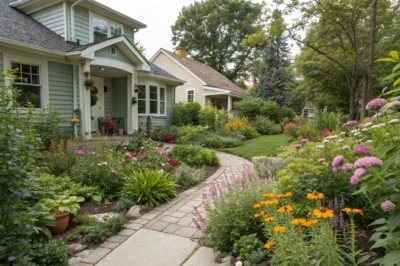1. Harvestable Walkway Edges
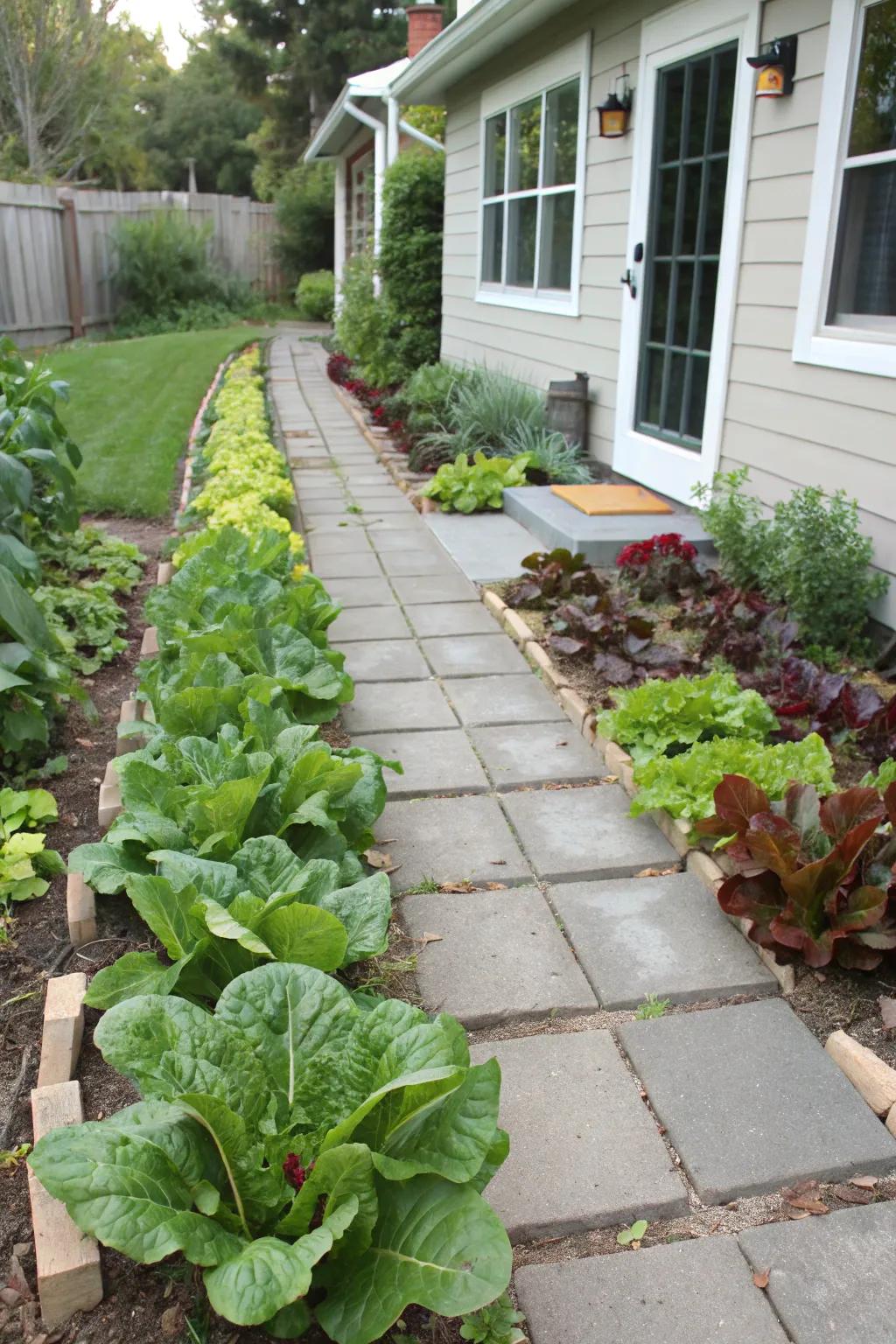
Line your walkway with harvestable plants like lettuce or chard. In my garden, they add a lush, edible edge that’s easy to access.
A few helpful options:
- Vegetable Seed Starter Kit: Start your edible walkway today with this easy-to-use seed starter kit for vegetables.
- Garden Border Edging: Define your harvest path with durable and stylish garden border edging for a neat look.
- Heavy Duty Garden Trowel: Enhance your gardening experience with a durable trowel, perfect for planting and maintaining edges.
2. Herbs By The Walkway
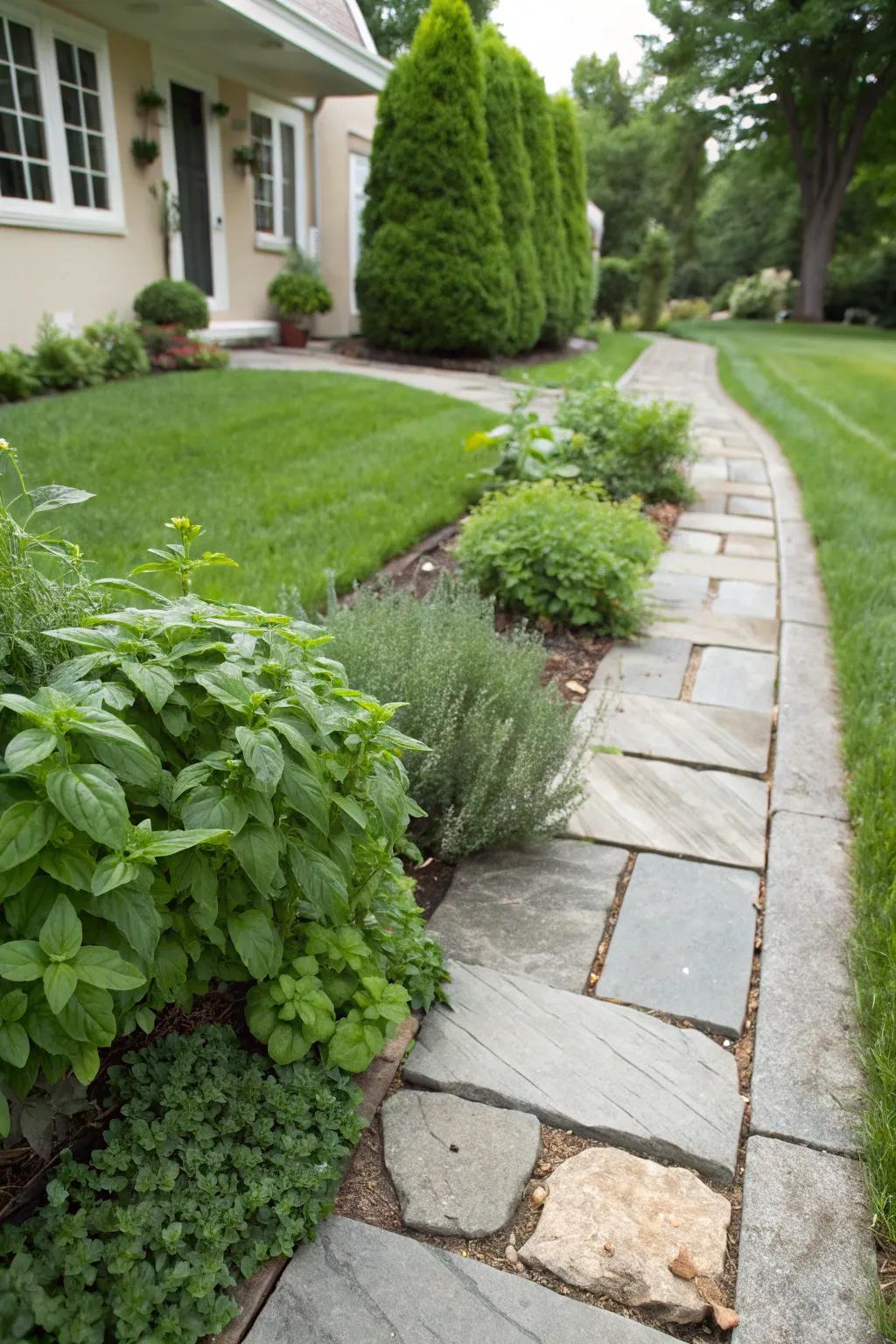
Planting herbs along your walkway not only adds fragrance but also ensures you always have fresh seasoning at hand. In my garden, basil and mint thrive here, making every entrance and exit a sensory delight.
Some ideas to consider:
- Outdoor Herb Planter with Drainage: Enhance your garden’s beauty while keeping herbs healthy with a stylish outdoor herb planter.
- Organic Herb Seeds Pack: Start your herb garden effortlessly with this pack of organic seeds and enjoy fresh flavors.
- Herb Pruning Shears: Maintain the perfect shape and health of your herbs with precise pruning shears.
3. Seasonal Crop Rotation
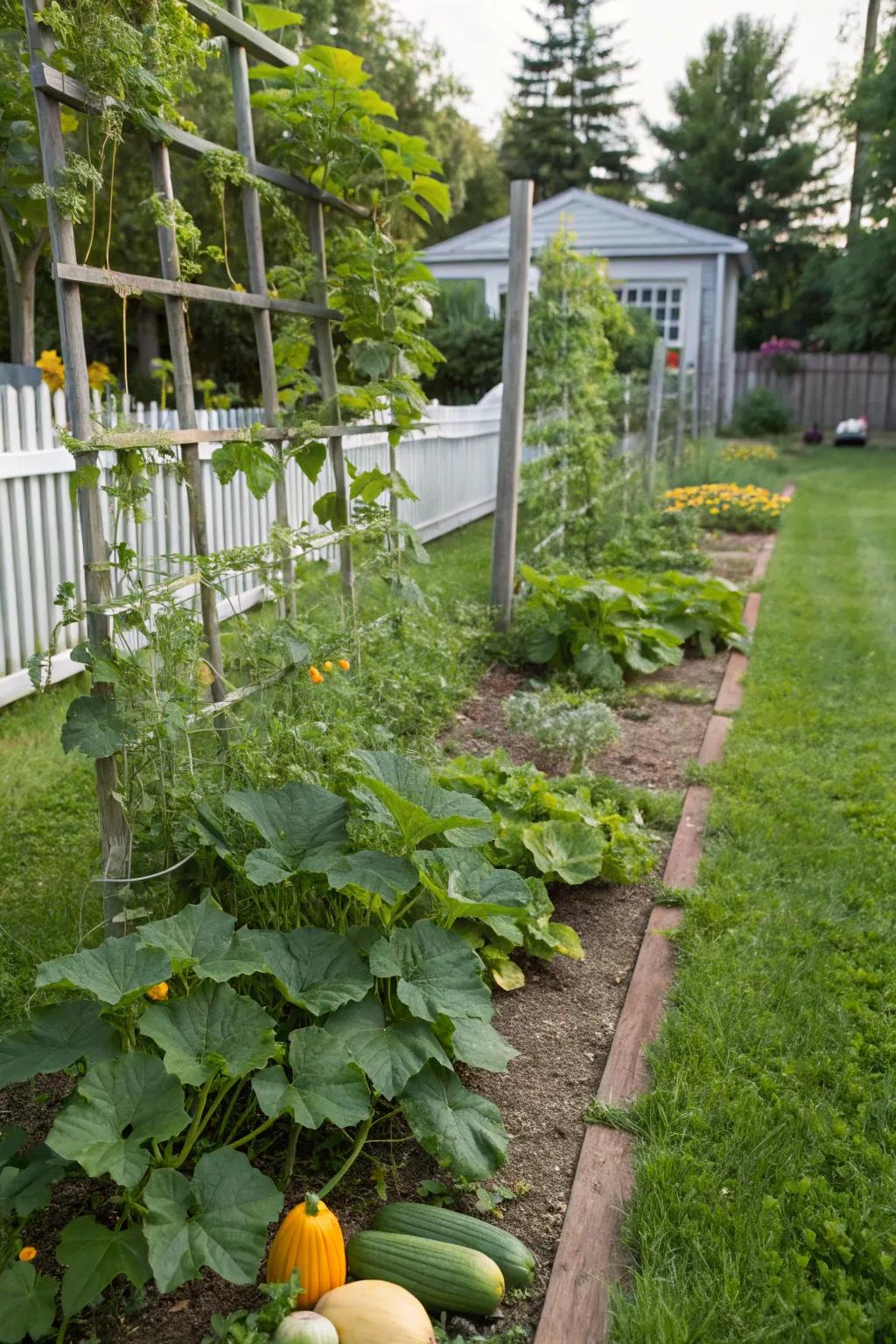
Practice seasonal crop rotation to keep your garden thriving year-round. I rotate my crops to ensure fresh produce each season while maintaining soil health.
These products might help:
- Raised Garden Beds: Elevate your gardening with raised beds, ensuring efficient crop rotation and soil health.
- Soil Test Kit: Check your soil’s health easily. Maintain optimal conditions for seasonal crops year-round.
- Garden Trellis: Support vertical growth for climbing plants, optimizing space and crop rotation in your garden.
4. Pathways with Edible Ground Covers
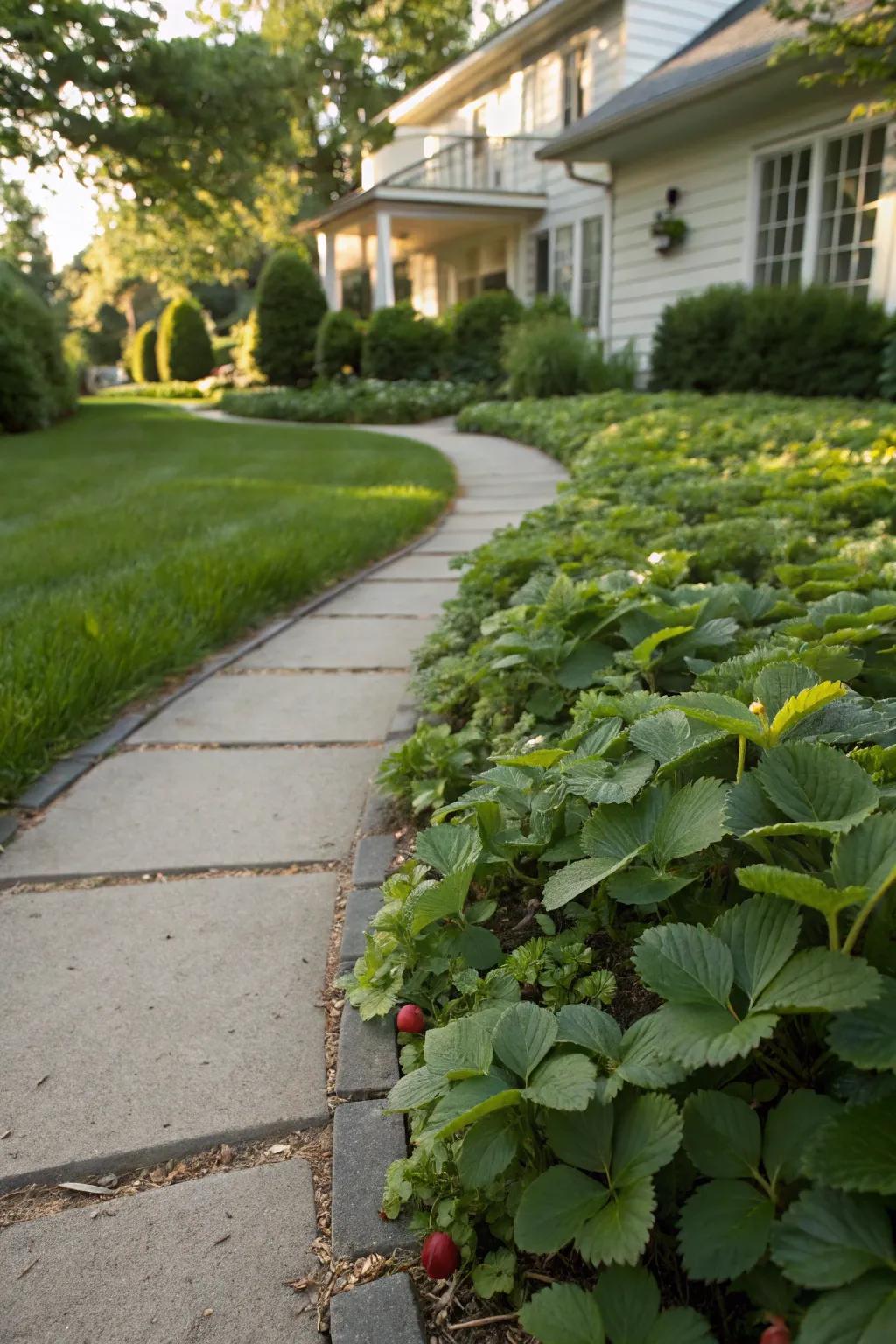
Transform your pathways with edible ground covers like strawberries or thyme. In my garden, these plants add charm and a surprising snack for anyone strolling by.
May just do the trick:
- Strawberry Plants for Edible Landscaping: Enhance your pathway with lush strawberry plants, adding beauty and a tasty treat.
- Creeping Thyme Seeds: Plant creeping thyme for aromatic walkways and delicious herbs at your fingertips.
- Edible Landscaping Guidebooks: Discover creative ideas for integrating edible plants into your landscape design.
5. Edible Hedges
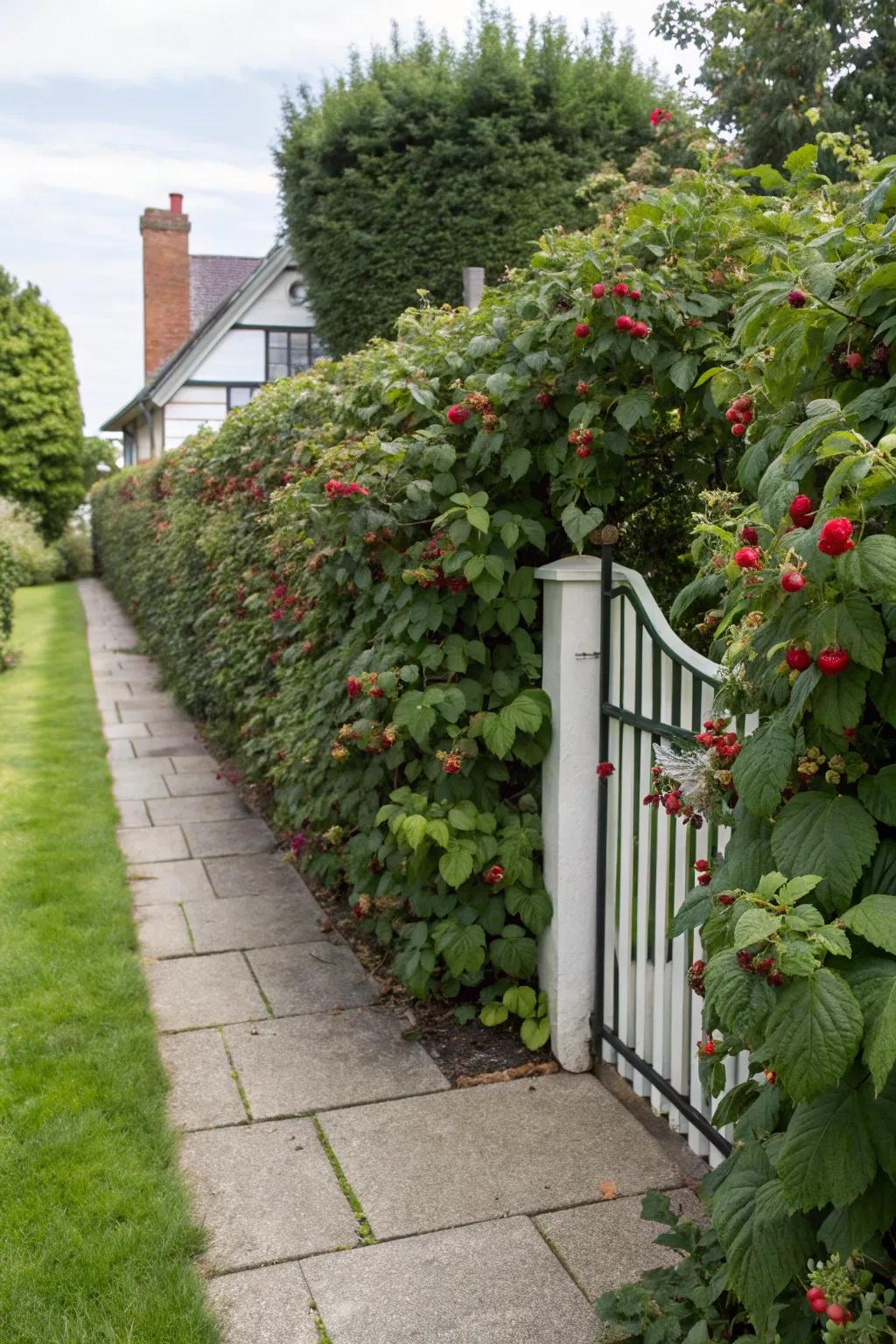
Create edible hedges with berry bushes like blueberries or raspberries. My raspberry hedge not only defines the space but provides a sweet harvest.
These products might be useful:
- Raspberry Bushes: Plant raspberry bushes for a bountiful harvest and a naturally appealing boundary in your yard.
- Blueberry Plants: Enhance your landscape with blueberry plants offering nutritious, delicious berries and vibrant foliage.
- Berry Fertilizer: Use berry fertilizer to ensure lush growth and maximize your berry yield each season.
6. Creative Use of Perennials
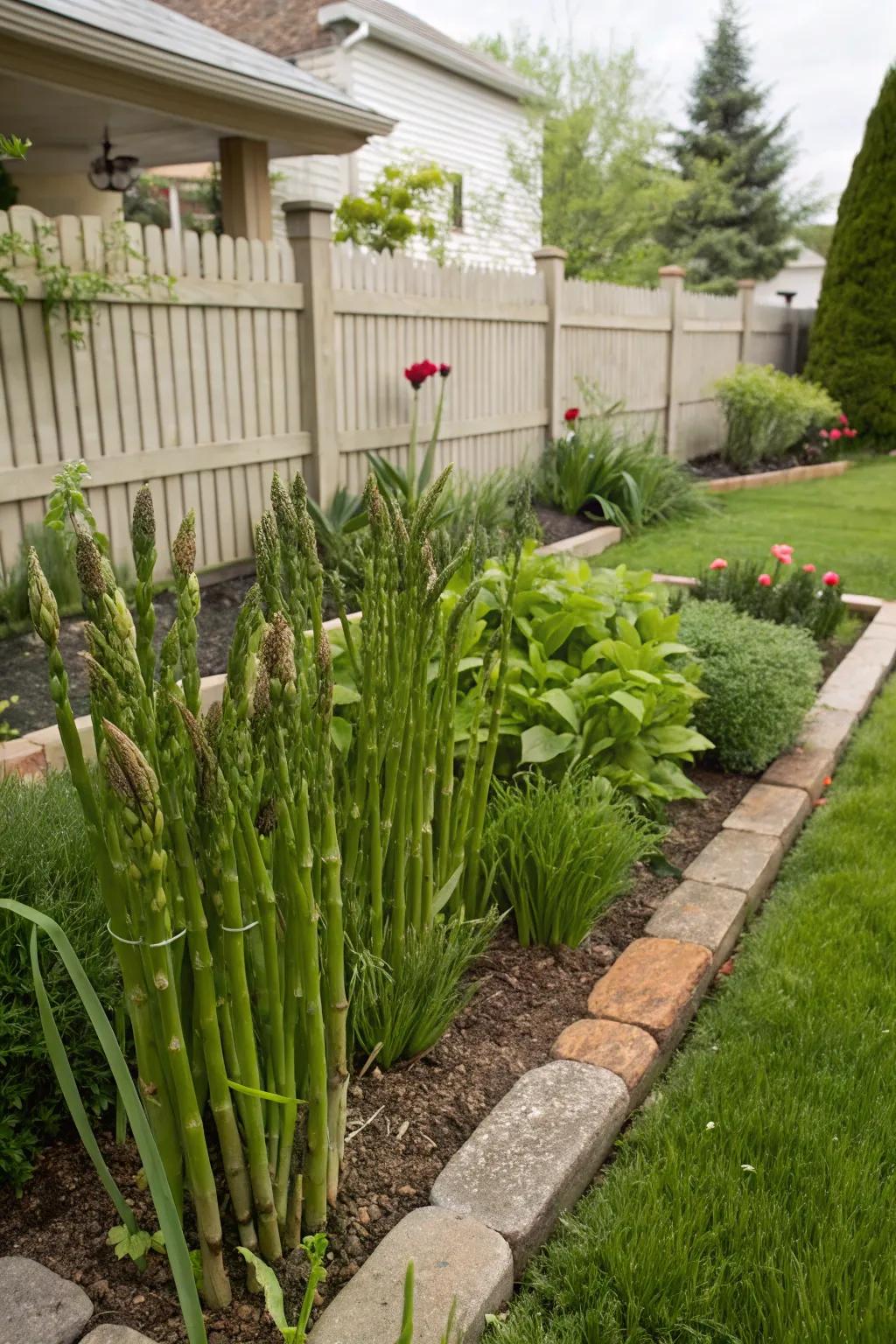
Embrace perennial plants like rhubarb or asparagus for low-maintenance beauty. My asparagus patch returns each year, offering both food and foliage.
Maybe worth checking out:
- Asparagus Crowns for Planting: Plant asparagus crowns to enjoy perennial harvests and vibrant foliage in your yard.
- Organic Rhubarb Seeds: Grow organic rhubarb to add color and flavor to your edible landscape each year.
- Perennial Herb Garden Kit: Start a perennial herb garden and enhance your yard with versatile and aromatic plants.
7. Vertical Trellises for Climbing Plants
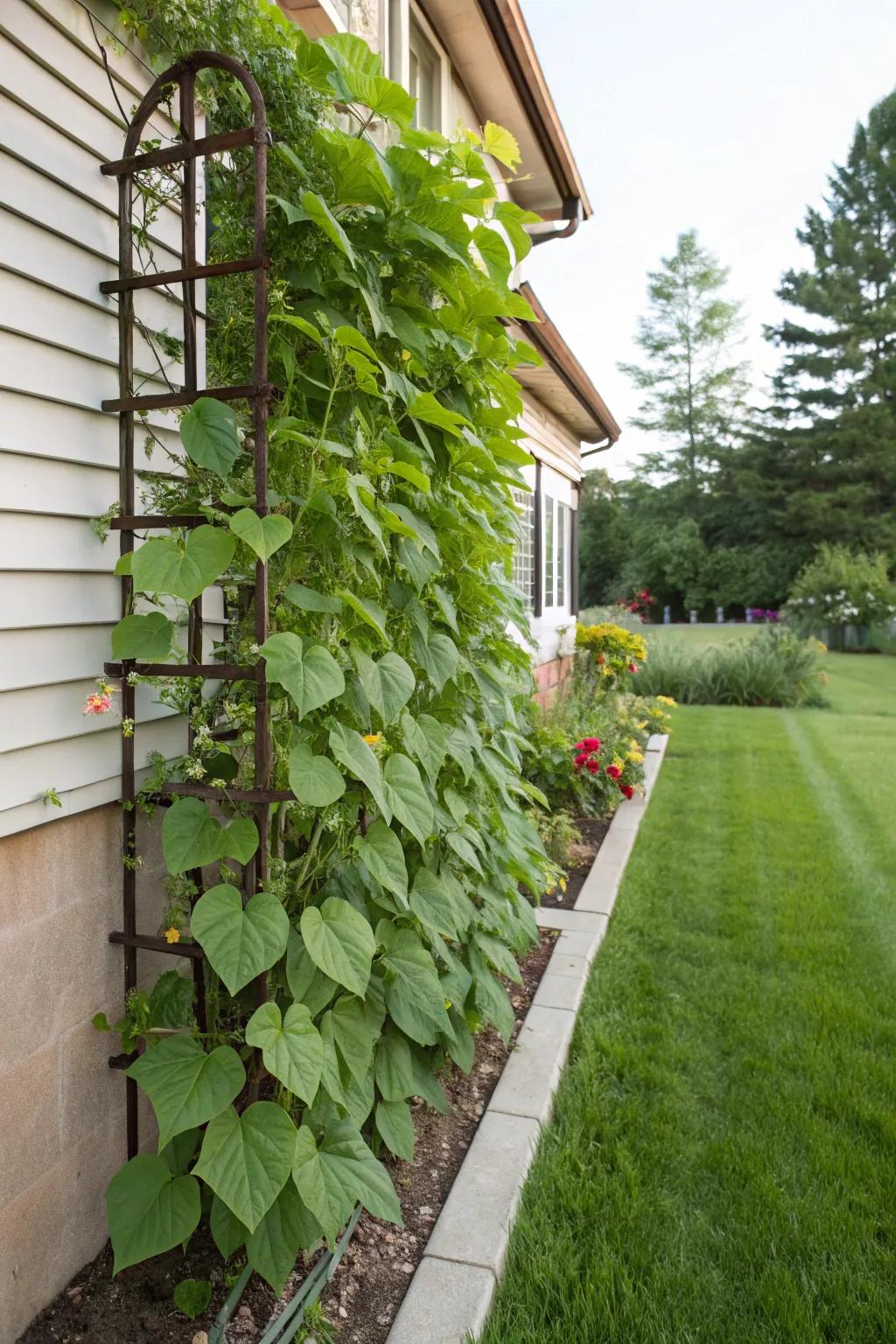
Use trellises to take your garden vertical with climbing plants like beans or peas. I adore how they create a lush green wall that adds privacy and beauty to my space.
Consider these options:
- Expandable Garden Trellis: Enhance your garden’s vertical beauty and support climbing plants effortlessly with this adjustable trellis.
- Decorative Metal Trellis: Add elegance and functionality to your garden by using this beautifully crafted metal trellis.
- Wooden Garden Obelisk: Create a stunning vertical focal point and support your climbing plants with this wooden obelisk.
8. Incorporate Companion Planting
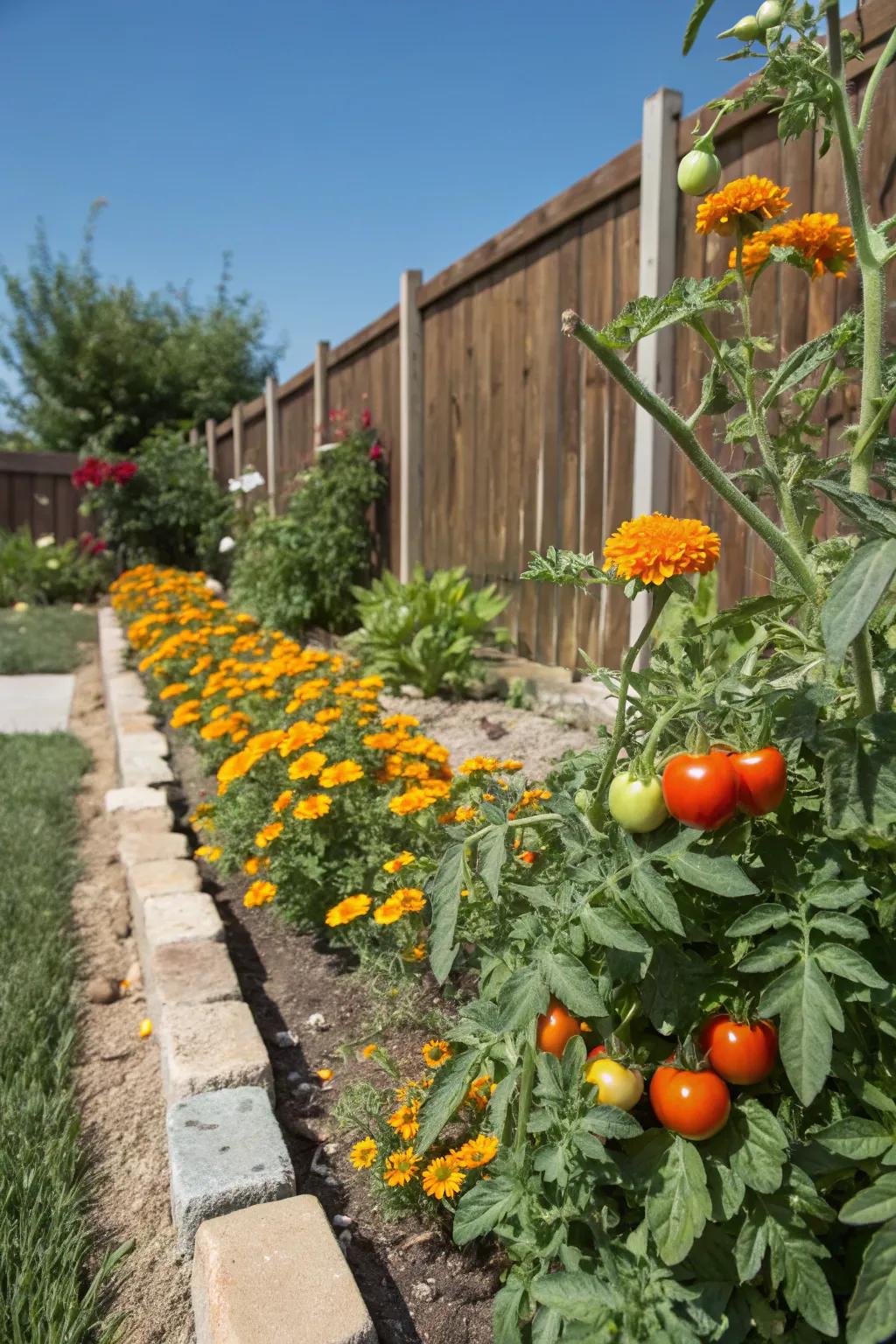
Use companion planting to boost growth and deter pests naturally. I’ve paired tomatoes with marigolds, and the results are both beautiful and bountiful.
Items that may come in handy:
- Tomato and Marigold Seed Pack: Grow vibrant tomatoes and marigolds together to enhance growth and deter pests naturally.
- Organic Vegetable Fertilizer: Boost plant health and productivity with an organic fertilizer suitable for companion planting.
- Garden Pest Deterrent Spray: Protect your plants with a natural pest deterrent spray for sustainable gardening.
9. Raised Garden Beds

Raised garden beds are a fantastic way to organize your plants and improve soil quality. I’ve found that using wooden frames adds a rustic touch while keeping everything tidy and accessible.
Give these a look:
- Wooden Raised Garden Bed Kit: Elevate your gardening with a durable wooden frame, perfect for organizing your plants easily.
- Organic Potting Soil Mix: Boost plant growth with nutrient-rich soil, ideal for any raised bed gardening setup.
- Self-Watering System: Simplify your gardening with a self-watering system, ensuring plants stay hydrated effortlessly.
10. Edible Arbors
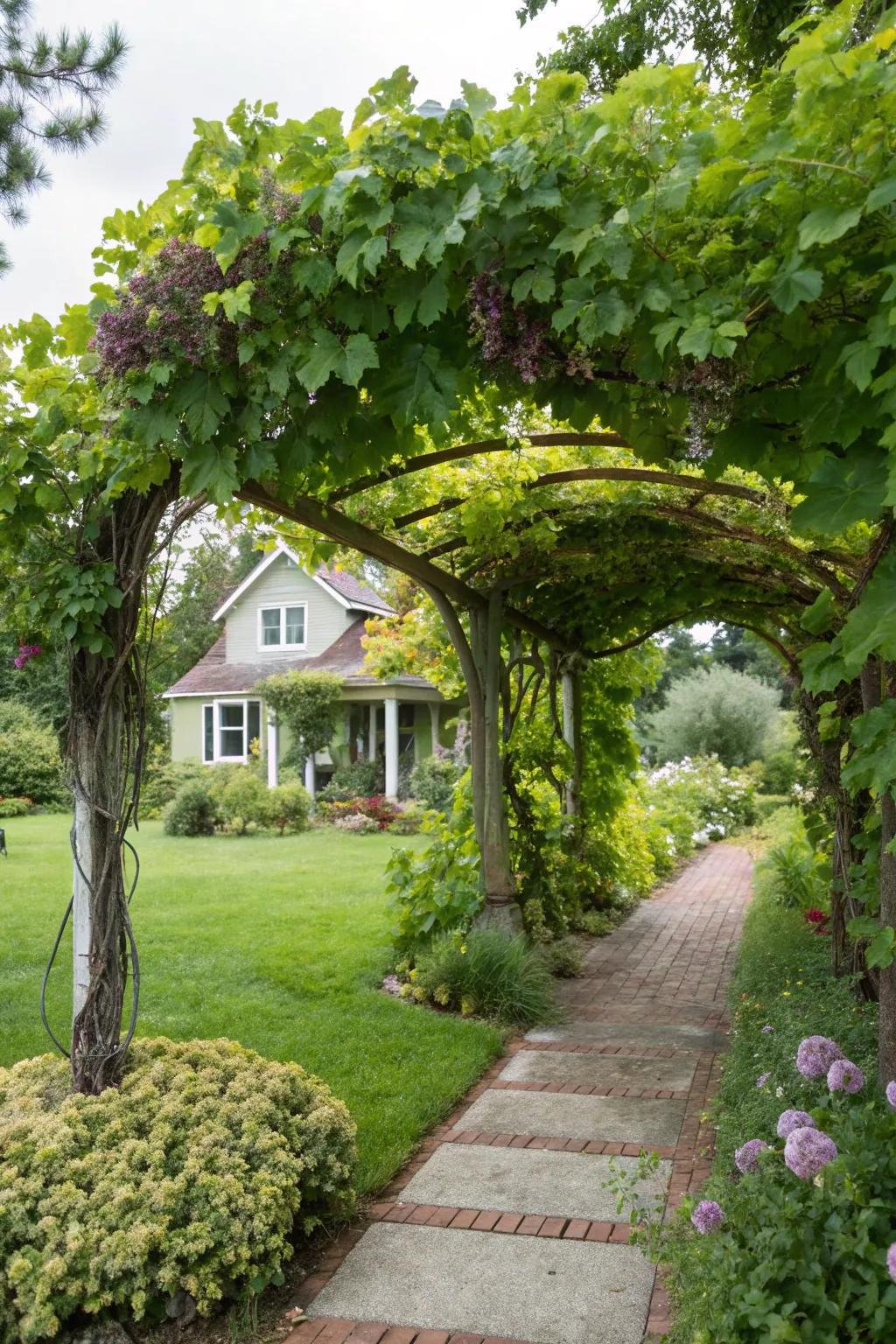
Install an arbor and let grapes or kiwis climb for a stunning edible entrance. My grapevine-covered arbor is both a grand entrance and a producer of delicious grapes.
Some handy options:
- Garden Arbor with Climbing Support: Create a stunning entryway with a sturdy garden arbor perfect for climbing plants.
- Grapevine Starter Kit: Start your grape arbor with easy-to-plant grapevines for a lush, fruitful entrance.
- Kiwi Plant Set: Enhance your arbor with fast-growing kiwi plants, offering shade and edible rewards.
11. Edible Privacy Screens
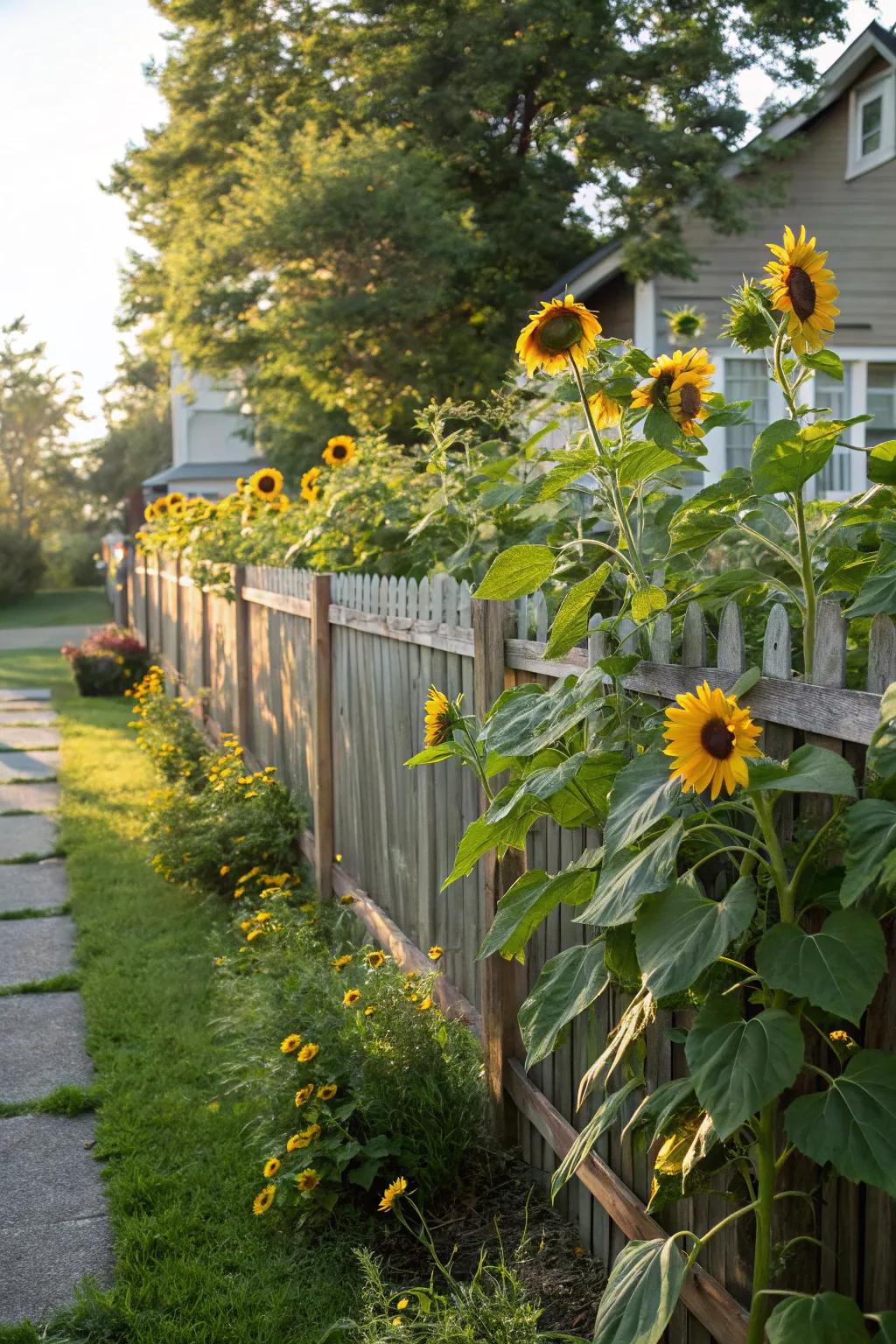
Create privacy screens with edible plants like tall beans or sunflowers. I’ve planted sunflowers along my fence line, adding beauty and a barrier.
Try these:
- Sunflower Seed Packets: Grow vibrant sunflowers for a beautiful and edible privacy screen in your yard.
- Climbing Bean Seeds: Add a touch of green and privacy with delicious climbing beans along your fence.
- Gardening Trellis: Support your edible plants with a sturdy trellis to enhance your garden’s vertical growth.
12. Functional Garden Art
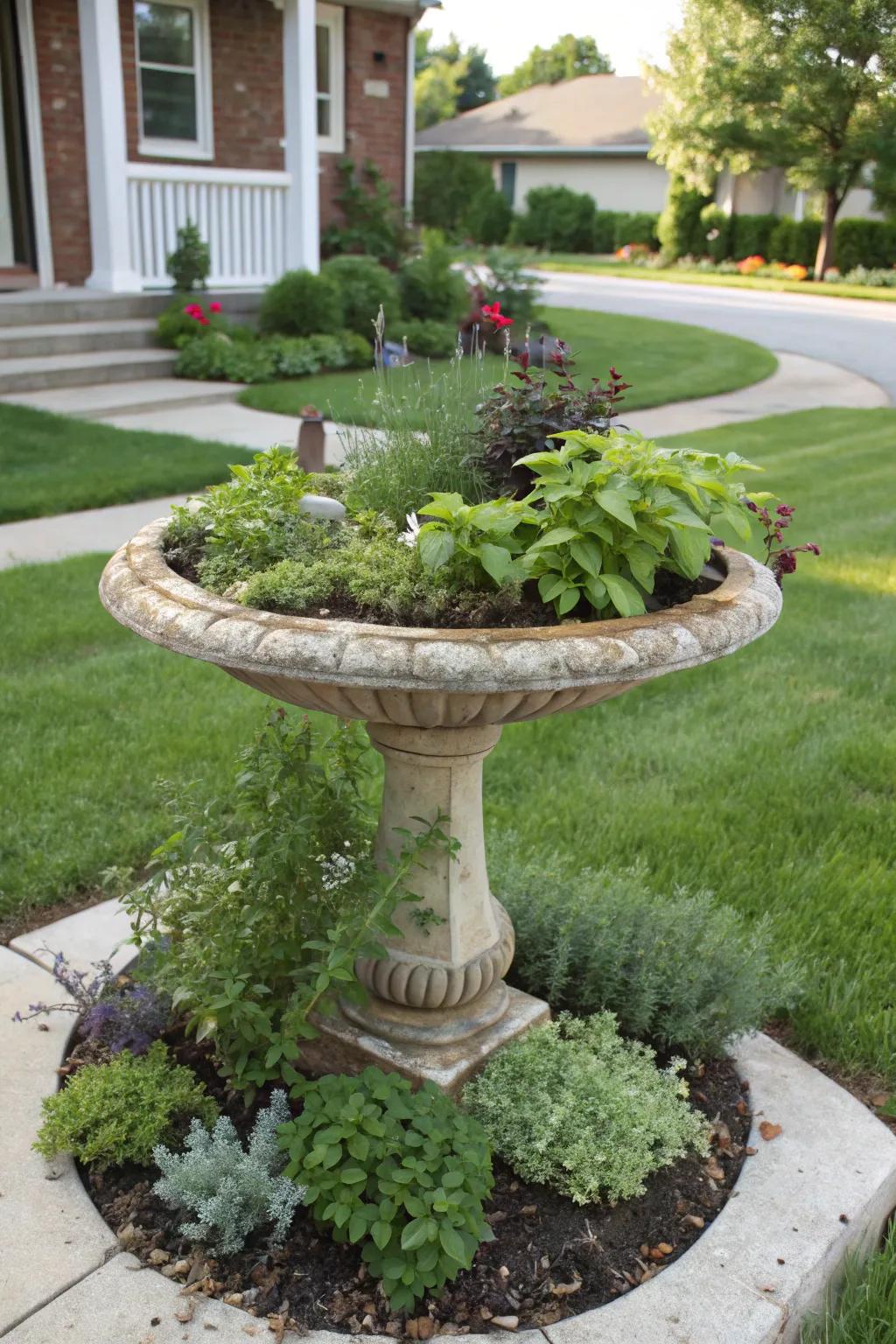
Integrate functional garden art like birdbaths or sculptures that double as planters. My birdbath planter is a conversation starter and a haven for pollinators.
Useful items to consider:
- Birdbath Planter Combo: Enhance your garden with a birdbath that doubles as a planter. Great for attracting pollinators.
- Sculptural Planter with Water Feature: Add an artistic touch with a planter that includes a soothing water feature for tranquility.
- Solar Powered Birdbath Fountain: Create a relaxing ambiance with a solar-powered fountain that attracts birds and beautifies your landscape.
13. Use of Mulch in Edible Gardens
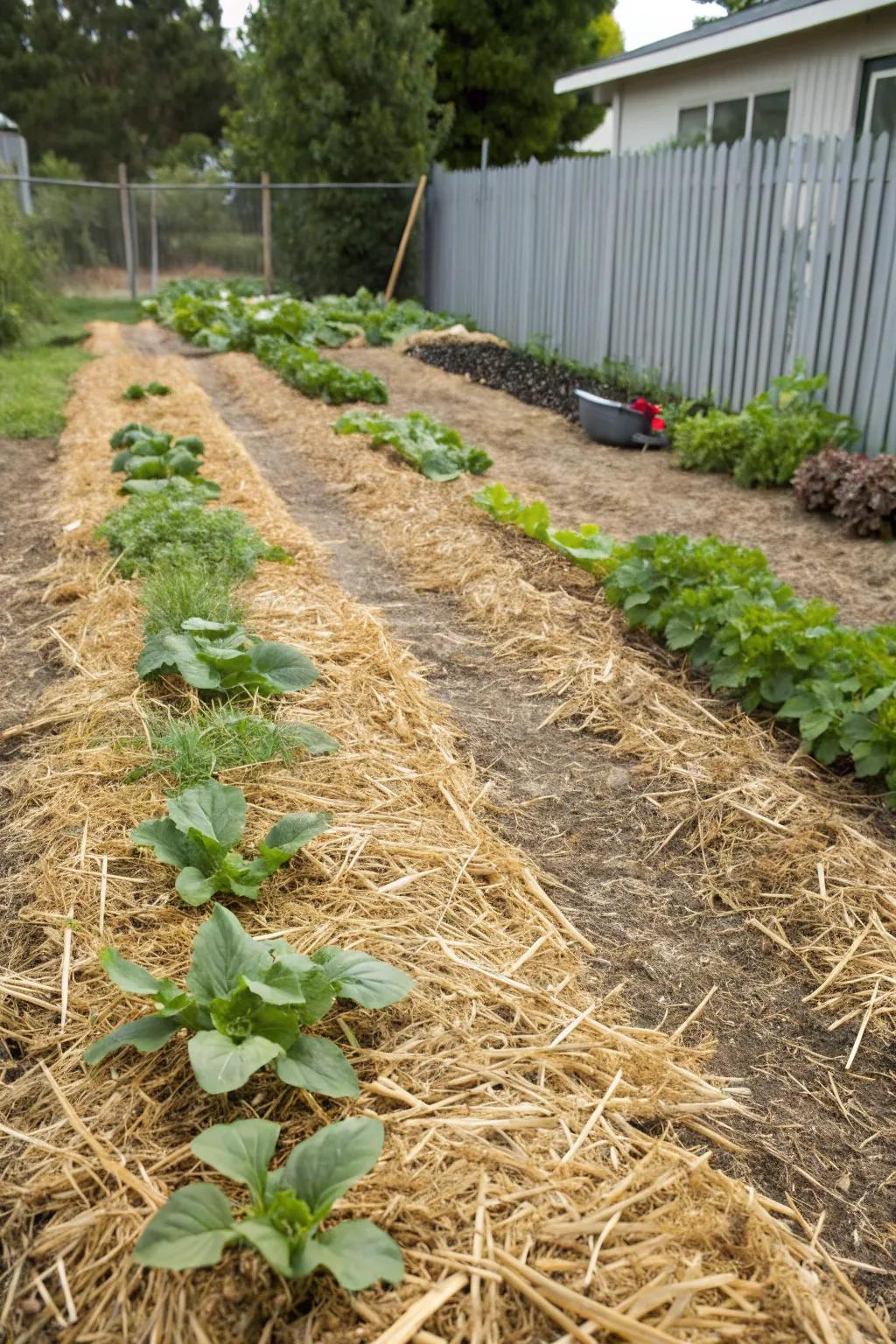
Apply mulch to retain moisture and reduce weeds in your edible garden. I use straw mulch around my plants, which also enriches the soil as it breaks down.
You might give these a try:
- Natural Straw Mulch: Enhance your garden with natural straw mulch, boosting moisture retention and soil health effortlessly.
- Organic Garden Mulch: Protect your plants with organic garden mulch, reducing weeds and enriching the soil as it decomposes.
- Burlap Mulch Cover: Use burlap mulch covers to keep your garden moist and reduce weed growth efficiently.
14. Incorporating Grains
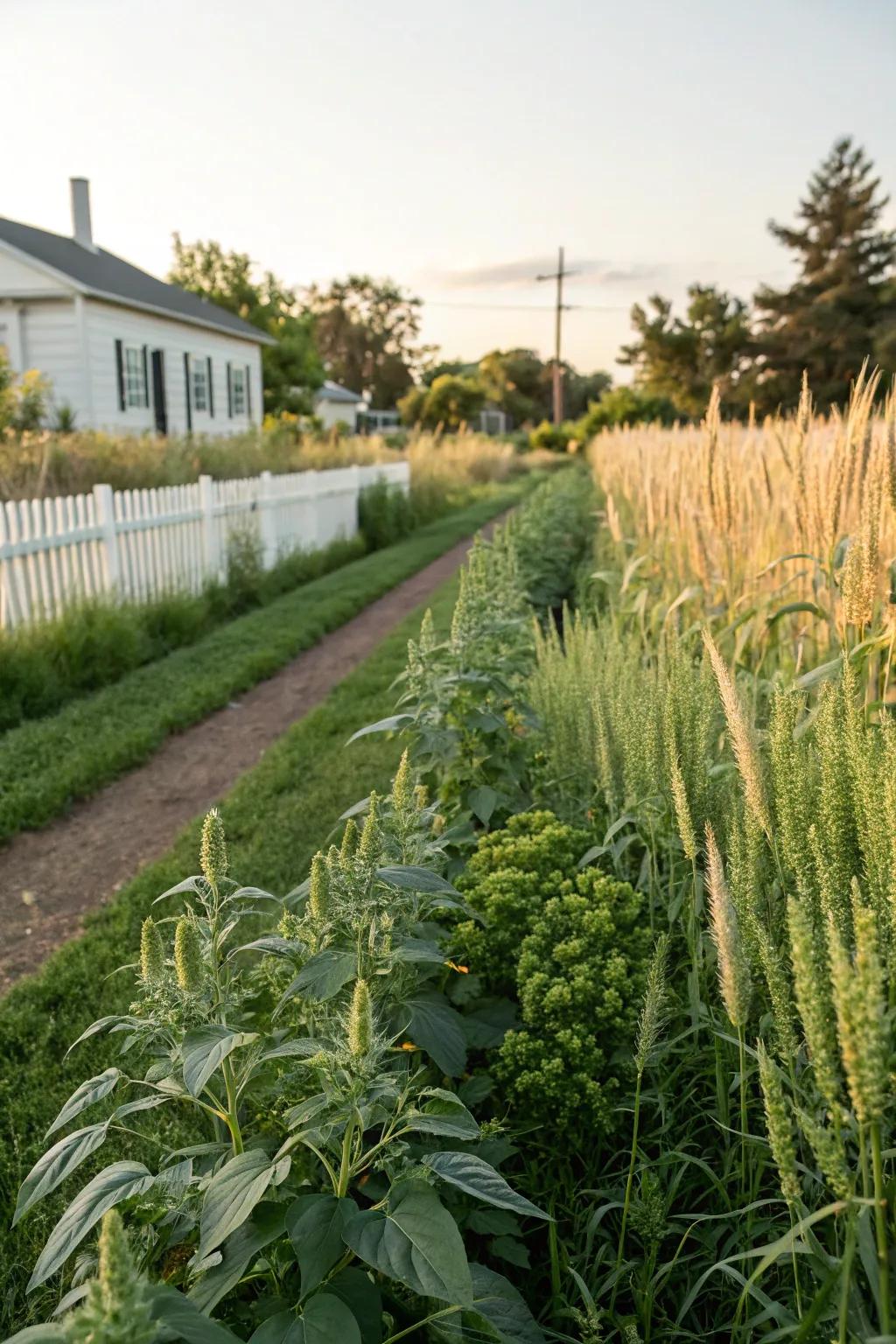
Add an unexpected twist by growing grains like quinoa or barley. I love how they sway in the breeze, adding texture to my garden.
A few choices to try:
- Quinoa Seeds for Planting: Grow your own quinoa for a beautiful and nutritious addition to your edible landscape.
- Barley Seeds for Garden: Plant barley to add texture and movement to your garden with ease.
- Organic Fertilizer for Grains: Boost your grain growth with organic fertilizer, ensuring a healthy harvest.
15. Edible Flower Beds
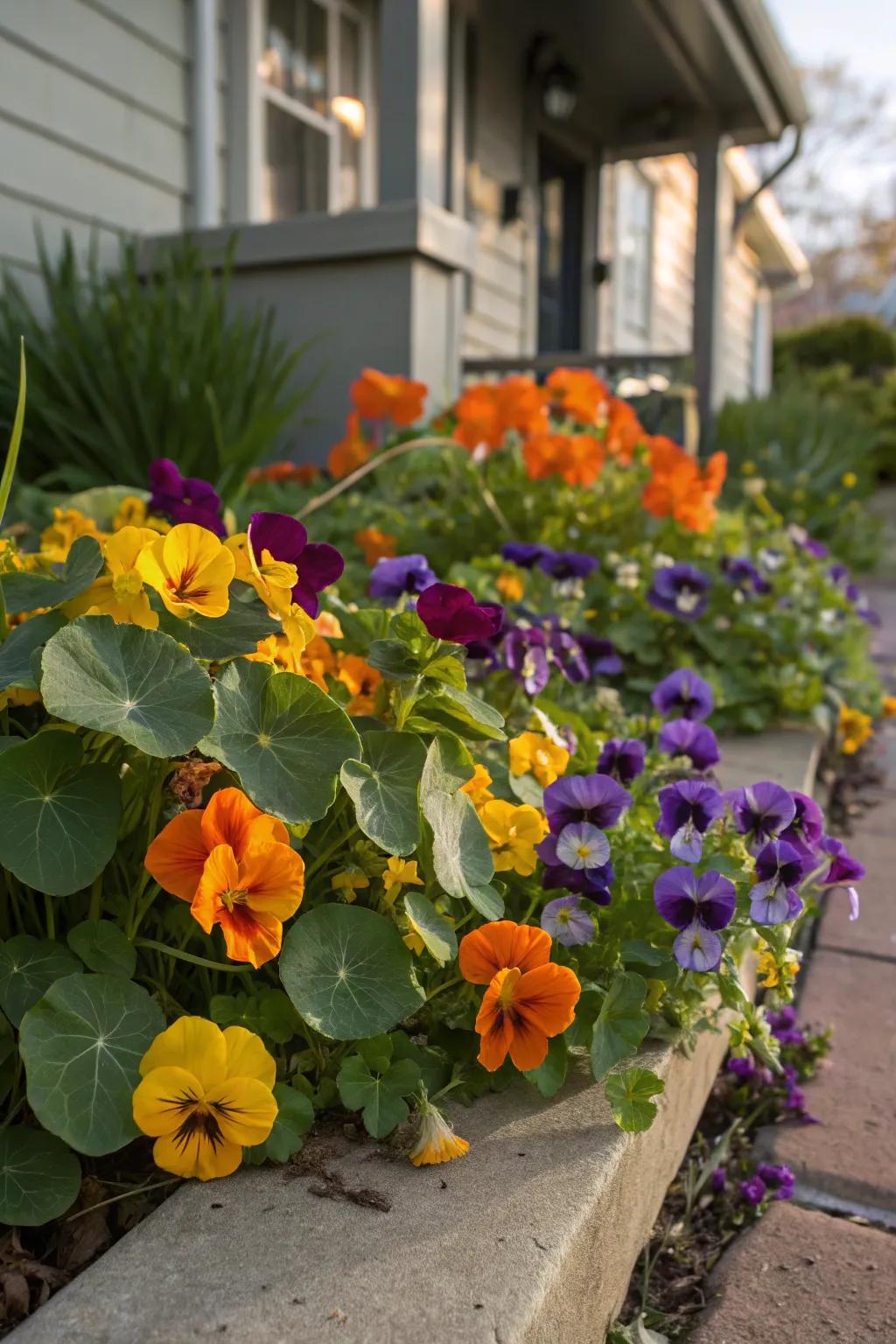
Add a splash of color with edible flowers like nasturtiums or violets. These flowers in my yard are not just pretty; they’re delicious in salads!
Products that could assist:
- Edible Flower Seed Pack: Grow colorful edible flowers in your garden to enhance salads and dishes with ease.
- Organic Soil Mix for Flower Gardens: Boost your flower garden’s growth with nutrient-rich, organic soil mix optimized for blooms.
- Flower Bed Fertilizer for Edible Plants: Enhance growth and color of your edible flowers with specially formulated plant fertilizer.
16. Mixed Borders of Edibles and Ornamentals
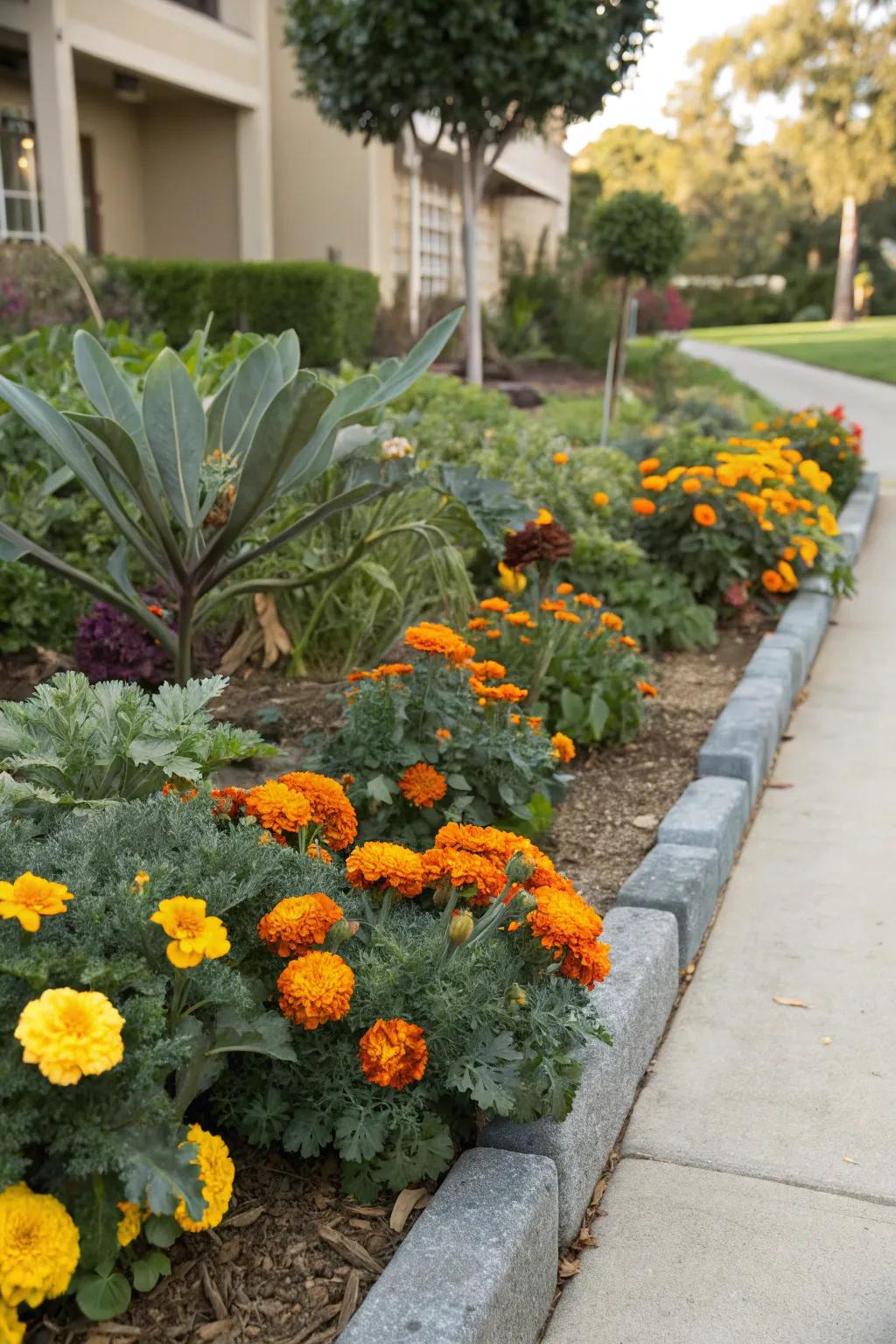
Mix edibles and ornamentals in your border plantings for a seamless blend of beauty and utility. My borders are alive with marigolds and kale, creating a vibrant and edible edge.
Explore these options:
- Marigold Seeds: Enhance your garden borders with vibrant marigolds, adding color and natural pest control.
- Kale Plant Starter Kit: Grow your own fresh kale right in your garden border for beauty and nutrition.
- Organic Fertilizer for Edibles: Boost your plants’ growth with organic fertilizer, perfect for both edibles and ornamentals.
17. Fruit Trees as Focal Points
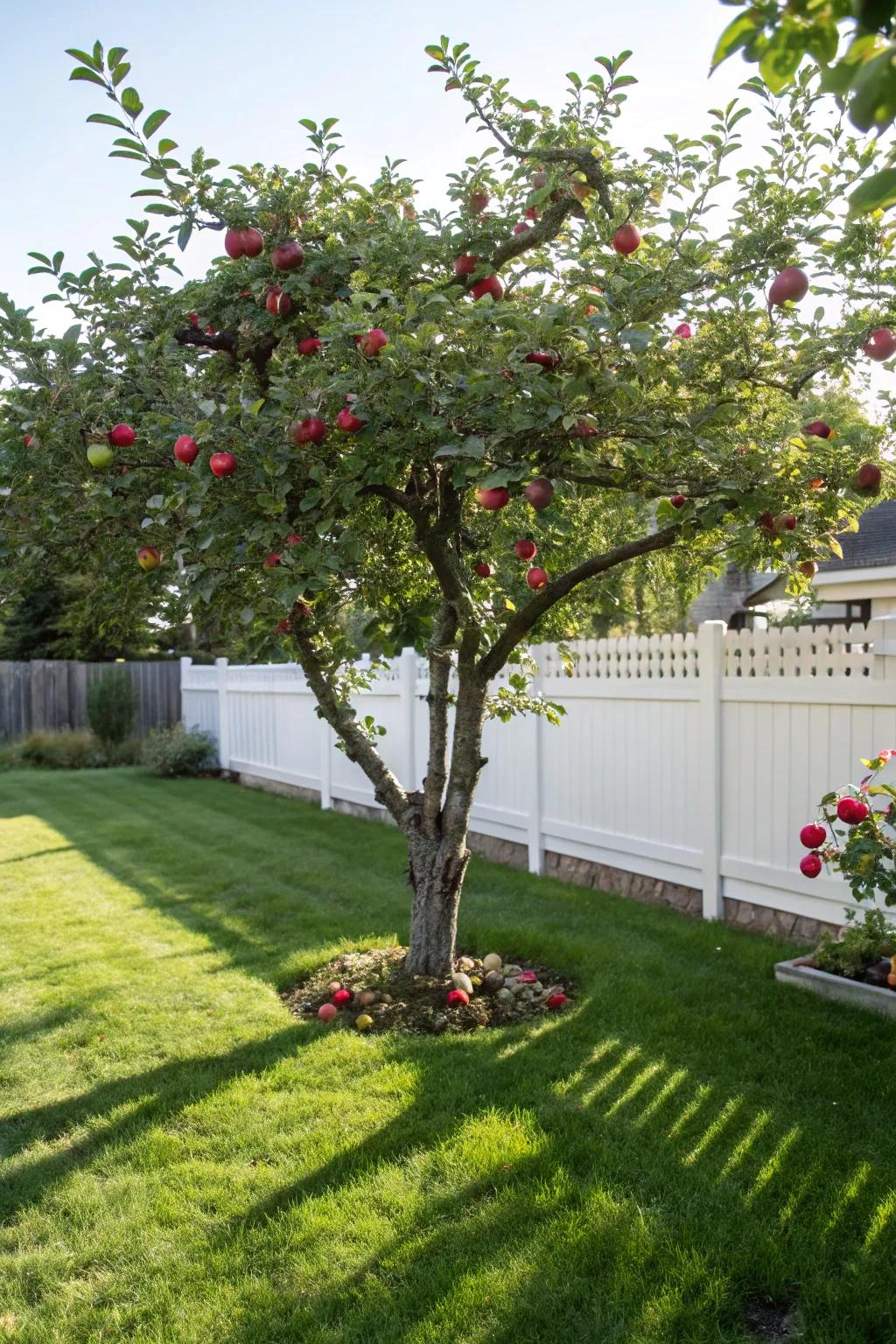
Incorporate fruit trees as focal points for a touch of grandeur and productivity. My dwarf apple tree not only provides shade but also delicious snacks right at my doorstep.
Possibly handy products:
- Dwarf Fruit Tree Planting Kit: Transform your yard with a dwarf fruit tree planting kit for fresh, delicious harvests.
- Organic Fruit Tree Fertilizer: Boost growth and fruiting of your trees using organic fertilizer suitable for all fruit trees.
- Fruit Tree Pruning Shears: Maintain your tree’s health and shape easily with durable, sharp pruning shears.
18. Water Features with Edibles

Incorporate water features surrounded by edibles for a soothing touch. My small pond is fringed with watercress, adding tranquility and flavor.
A few things you might like:
- Outdoor Garden Pond Kit: Create a serene oasis in your yard with this easy-to-install garden pond kit.
- Watercress Seeds for Ponds: Add a fresh, peppery flavor to meals by growing watercress around your pond.
- Solar-Powered Pond Fountain: Enhance your pond’s tranquility with an eco-friendly, solar-powered fountain feature.
19. Nut Trees for Structure
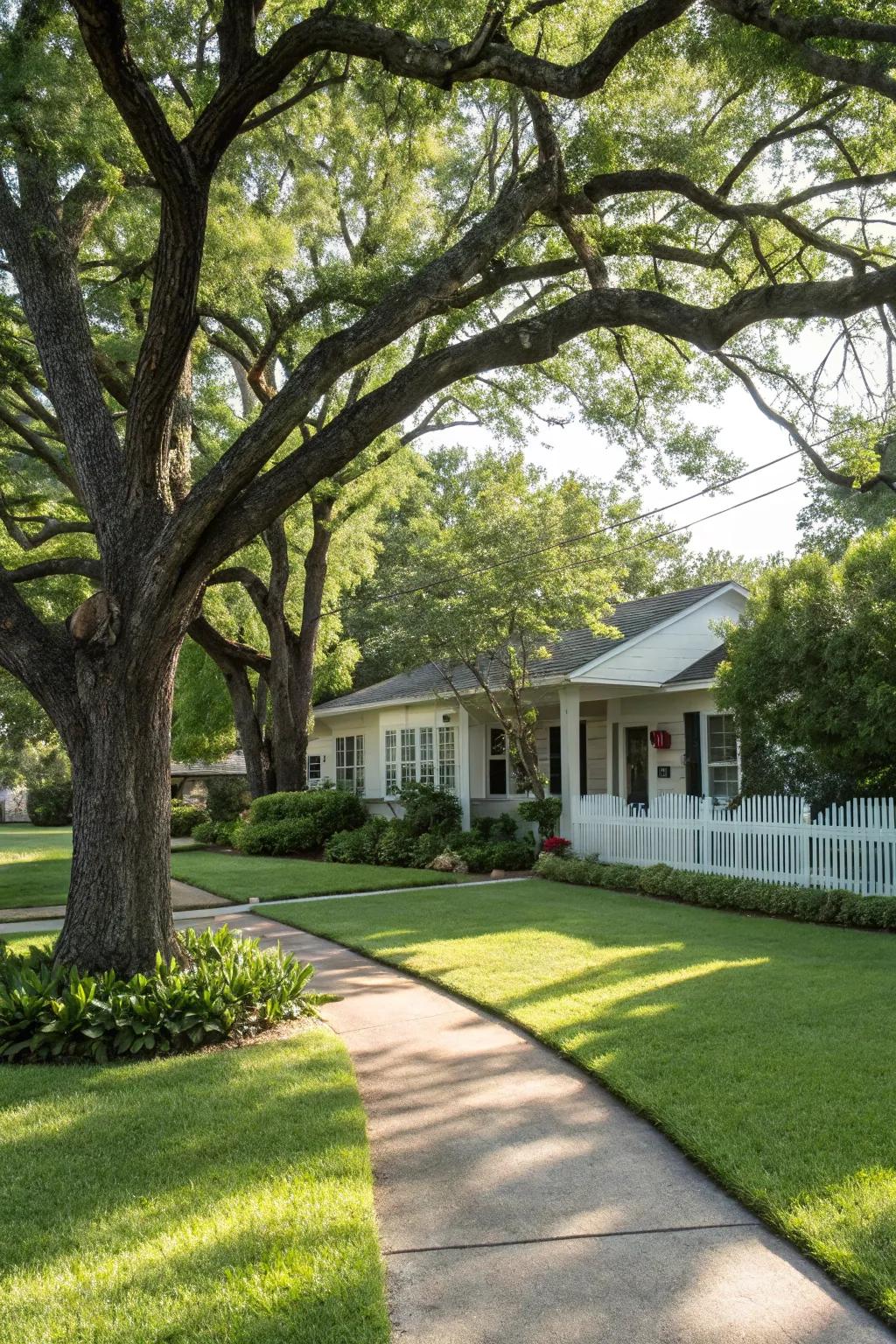
Consider nut trees for structure and shade. My pecan tree not only anchors the garden but also provides a yearly harvest of nuts.
Possibly helpful picks:
- Pecan Tree Sapling: Plant a pecan tree sapling for lush shade and a bountiful harvest in your garden.
- Nut Tree Fertilizer: Nourish your nut trees with this fertilizer, ensuring strong growth and abundant nut production.
- Tree Pruning Shears: Maintain the health and shape of your nut trees with these high-quality pruning shears.
